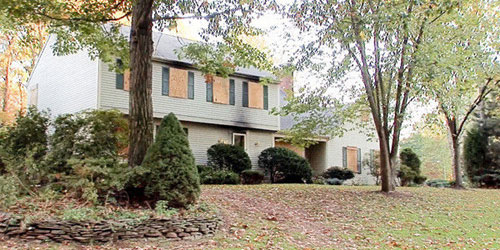 For all the gruesome detail in “The Cheshire Murders” (HBO, 9 p.m.), the chilling and well made documentary about the home invasion, rape, murder and arson six years ago tonight, the filmmakers didn’t have access to the crime photos.
For all the gruesome detail in “The Cheshire Murders” (HBO, 9 p.m.), the chilling and well made documentary about the home invasion, rape, murder and arson six years ago tonight, the filmmakers didn’t have access to the crime photos.
But, filmmaker David Heilbroner says, “We wouldn’t have used them anyway.”
The 2007 slaying of the wife and two daughters of a respected doctor in Cheshire, Conn., horrified and captivated the state right until the final conviction and death penalties for the two perpetrators, Steven Hayes and Joshua Komisarjevsky.
In an interview I conducted for a story in the Hartford Courant, Heilbroner said, “Some of the photographs were sealed by the court and the media was allowed to see them without showing them. We really in fact held back, even in this cut, as graphic as it is, is more than enough to impress upon anyone the details of the horror. There were even details we held back on. Because we just felt there’s a level of respect we wanted to give to leave to the victims themselves.
“We’re talking the rape and burning alive of an 11 year old girl,” Heilbroner said. “You don’t need to know more than that.. You don’t neeed to know the ugly specifics. That’s specific enough I think.”
Only jurors got to see some of the photos, he said, “and a lot of them had to go seek counseling. And we watched these photos being passed round in a folder and we saw the jurors one by one lose it. So one could ask, Is this film going to dredge this up again? But in scheme of a two hour film it was important to show that the crime was bad enough to shake a town, a state, enough to even shift the law.”
Besides, he said, “it’s important to know what went on that night to understand better um the enormous of trying to cope with this from the victims point of view, and by victims I man family members of the perpetrators.
“But I also think anyone who wants to devote time to knowing the details of the crime does need to know the details of the crime. You need to know the pathology of the defendants themselves. And oddly enough, in the case, the details of what Joshua did in particular dovetail in a fascinating way I think with the interviews that you’ll see with people who knew him his entire life.”
Why do that at all? “If you learn who Joshua is, and you understand the things that were done to him, it starts to make some twisted sense. And in a way, that helps you digest this otherwise unfathomable crime.”
The murder convictions coincided with the end of the death penalty in Connecticut.
And Heilbroner calls the home invasion case “the perfect crucible for looking at death penalty. In this case it seems the guilt not a question, the heinousness of the crime isn’t an issue, so if you’re going to have a death penalty case, isn’t this the perfect case.”
At the same time, says fellow filmmaker Kate Davis, “an aspect of the death penalty that I certainly wasn’t aware of before, and the public may not have been aware of, that once something becomes a death penalty case it involves a two part trial, that involves going through the evidence twice, and not only that, in the mitigating phase having to prove the aggravating factors outweigh the mitigating factors, so that means really pressing upon the jury and the courtroom just how horrific the crime is.
We sat and watched the family crumble and cry, and were really shaken in the trial. All that extra trauma, which comes out in this case unspeakable unspeakable evidence. Would have not have been necessary or just an innocence or guilt situation,” Davis said.
“So it’s a really interesting irony to me there’s a true effort on the part of the victims in achieve what Dr. Petit calls the ultimate penalty for the ultimate crime, and yet in doing so, many people are put in the position of relive that night in the kind of detail they never would have otherwise been protected from.”